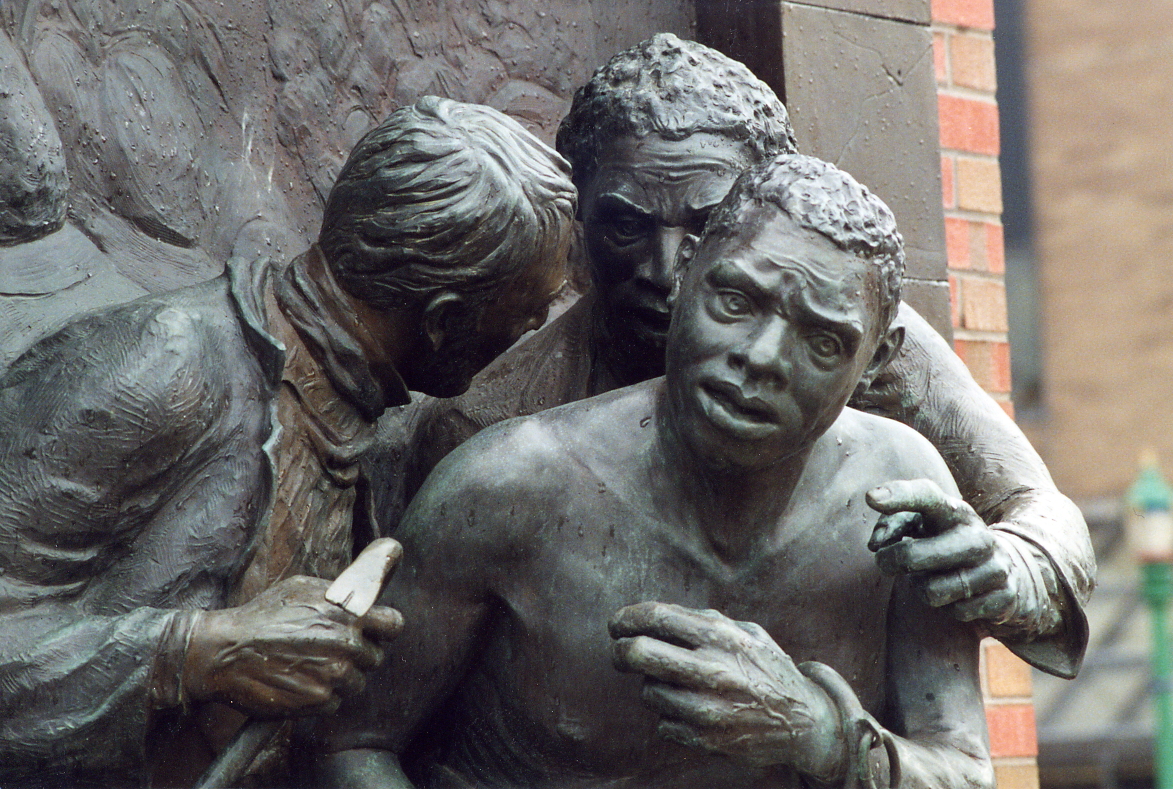(The original version of this article appeared in 2013 as part of a series on history and archaeology in upstate New York communities)
It’s been five years now, but back in February, 2013 I attended a Saratoga Reads program on the book Twelve Years a Slave by Solomon Northup. How timely. It was African-American History Month, and the movie of the same name was in the works, to be released in October.
Northup was a free man of African ancestry living in Saratoga Springs in 1841, when he was lured away from Saratoga by a promise of work as a musician in a circus, and then sold into slavery in the notorious Washington, D.C. slave market. After his return to freedom in 1853 he published his book and became a public speaker. His book was widely read and seen as an important eyewitness testimony to the inhumanity of slavery.
One of the subjects that came up in the program I attended was the controversy over the Fugitive Slave Act of 1850, which required the return of escaped slaves from non-slave states such as New York (and allowed the prosecution of people harboring slaves). I was reminded then of an event in the enforcement of this law-- and the resistance to it-- that I learned of during an archaeological survey of Clinton Square in Syracuse, New York.
Clinton Square-- located in the heart of 19th century Syracuse, and vitalized in olden times by that essential artery, the Erie Canal-- has a modern monument in brick and bronze to what is referred to as The Jerry Rescue. Jerry, also named William Henry, was working in Syracuse on October 1, 1851 when federal agents (and the local police) seized him and tried to arraign him as an escaped slave (which apparently he was).
The Jerry Rescue monument, Clinton Square, Syracuse, New York
However, the tale doesn’t end here, and in addition, there is a significant back-story to this attempt at fugitive slave capture. In his arrest and incarceration, Jerry became an unfortunate pawn of 1850s politics: In May of 1851, Secretary of State Daniel Webster had proclaimed to an audience in Syracuse that the law would be upheld despite the efforts of the abolitionists-- even if it had to be enforced during a scheduled congress of abolitionists in Syracuse in October.
So when Jerry was seized on October 1 under the very noses of the abolitionists meeting in Syracuse, the outrage of this particular (however legal) kidnapping was met with instant and undoubtedly calculated resistance.
With a canal basin, the best hotel, crowded businesses, government offices, the police station, and eventually an opera house, Clinton Square was the civic and social center of the city. The drama quickly played out in this most public arena where crowds could mass and express the vox populi.
The federal action was an obvious follow-up to Webster’s speech. It was a demonstration of federal power in the face of the radical anti-slavery movement. The abolitionists’ resistance to Jerry’s capture was immediate. It was even anticipated by those who were ready to ring church bells to alert them.
The bells rang. A large crowd gathered. The abolitionists tried to rescue Jerry at arraignment, and he actually broke free, making it to the street (still manacled) before being captured again. His arraignment was rescheduled and moved to a larger room at the police station, but the crowd did not disperse, despite a warning shot fired by the police. The rescuers battered down the door and the police surrendered Jerry, who was hidden in Syracuse, then spirited away to Oswego on Lake Ontario-- and from there to freedom in Canada.
The bronze statues depict William "Jerry" Henry fleeing with abolitionist supporters.
The photos seen here are from the Jerry Rescue Monument in Clinton Square. The monument’s bronze statues were sculpted by Sharon BuMann. They show Jerry, panicked, perhaps in pain, fleeing with the aid of white abolitionist Reverend Samuel J. May, and Bishop Jermain Loguen, an Underground Railroad leader who was once enslaved himself.
Reverend Samuel J. May and Bishop Jermain Loguen, along with many others aided in the freedom of William "Jerry" Henry.
A proclamation made by abolitionist leader Gerrit Smith the day after the rescue noted that “2,500 brave men” rose up for Jerry during the rescue. It also praised Syracuse while describing Daniel Webster in most unsavory terms. Later, Loguen and others were arrested for their roles in Jerry’s rescue (May was not). Bail was posted by Senator William Seward of Auburn, New York, who became Lincoln’s Civil War Secretary of State a few years later. Almost no one was convicted.
However, the story still isn’t quite over. Smith got the arresting Marshall Allen indicted for kidnapping, taking the opportunity through his argument in this case to figuratively indict the Fugitive Slave Law. In the end Marshall Allen, legally within his authority, was acquitted.
Finally, when the abolitionists commemorated Jerry’s rescue in 1853, the speaker preceding Frederick Douglass was Solomon Northup, recently freed, his story in print and sweeping the nation. Anti-slavery sentiment remained strong and Northup remained popular: he appeared in Syracuse to speak again in 1854, when a local newspaper referred to him as “Sol”.
References
Fiske, David
2013 Northup’s Southern Discomfort. Syracuse New Times November 6, 2013. https://www.syracusenewtimes.com/northups-southern-discomfort/. Electronic document consulted on February 13, 2018.
Hardin, Evamaria
1993 Syracuse Landmarks: An AIA Guide to Downtown and Historic Neighborhoods. Onondaga Historical Association, Syracuse, New York.
New York History Net
The Jerry Rescue. www.nyhistory.com/gerritsmith/jerry.htm. Electronic document consulted on February 21, 2013.
Northup, Solomon
2008 Twelve Years a Slave. Wilder Publications, Redford, Virginia.




